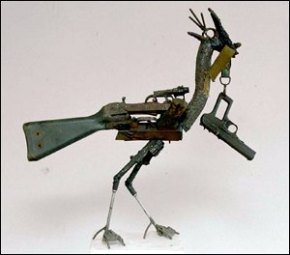Peter Eisenman, an American architect,
designed the Holocaust Memorial in Berlin. For the majority of Eisenman’s life,
he was dedicated to swimming. When he was in college, he realized that he had a
passion for architecture. His newfound talent prompted him to give up swimming
for good. After he graduated, he began teaching architecture at schools such
as, Ohio State University, Harvard, and Princeton. Some of the projects
Eisenman worked on were House VI, The Memorial to the Murdered Jews of Europe,
City of Culture of Galicia. After Eisenman constructed the Holocaust Memorial
in Berlin, he said, “I want visitors to feel the loss and disorientation the Jews
felt during the Holocaust.” Eisenman also explains that he intentionally
designed the memorial to be abstract; “the enormity and scale of the horror of
the Holocaust is such that any attempt to represent it by traditional means
inevitably inadequate.” Although some people thought the memorial should
contain names or dates to represent the victims, Eisenman felt that this would
make the memorial seem like a graveyard. The overall intention for this
memorial was for it to be a place that is an everyday experience.
The Holocaust
Memorial was created based on World War II. Adolf Hitler was in charge, and he
envisioned an Aryan race. Anyone who did not fit this “race” was considered
inferior. Initially, the Nuremburg Laws of 1935 were passed to exclude Jews from
society. Then, as Hitler became more powerful, he decided to create
concentration camps that would murder thousands of Jews and others that did not
fit the Aryan race. Inside the camps, people were tortured and practically
starved to death. Whether the people were forced to labor or perform other
tasks, they had to listen to the Nazis. There were also gas chambers and mass
graves that were used to “exterminate” as many people as possible. Hitler’s
ultimate goal was “extermination,” and he did whatever it took to reach that
goal. World War II had lasted from 1939-1945, when finally American soldiers
liberated the camps.
The Holocaust
Memorial consists of 2,700 concrete slabs covering about 204,440 square feet. In
addition, there is a visitor center underneath the stones that offers
information about the Holocaust. The primary human rights issue that surrounds
this work of art is Jews and many others not being seen as humans. People were
not treated with dignity or respect because the Nazis did not see value in
them. According to the Nazis, people were worthless in the following ways: not
qualifying for the Aryan race, being weak, being a woman or child, being old,
etc. This completely violates the majority of the Universal Declaration of
Human Rights. For example, Article 5 states, “No one shall be subjected to
torture or to cruel, inhuman or degrading treatment or punishment” (UDHR). By
putting people under the conditions of the concentration camps, the Nazis were
violating Article 5. In response to the Holocaust Memorial, the German
parliament said there intention is “to honor the murdered victims, keep alive
the memory of inconceivable events in German history and admonish all future
generations never again to violate human rights, to defend the democratic
constitutional state at all times, to secure equality before the law for all
people and to resist forms of dictatorships and regimes based on violence.”
The Holocaust
Memorial impacts people because it calls for action. Peter Eisenman said, “The
transformation of guilt into collective responsibility suggests that action
must be taken to ensure that negative events of the past do not ever happen
again the future.” Therefore, the Holocaust is a part of history that cannot be
ignored. The German society lives by the motto “never again” to ensure that
history will not repeat itself. German’s are now able to “wash their hands
clean of the history.” Personally, the memorial has never impacted me, because
I have never visited there. If I were to go to the memorial, I would be silent
the entire time. Just reading about the Holocaust Memorial makes me wonder about
how family members of the victims are affected.







